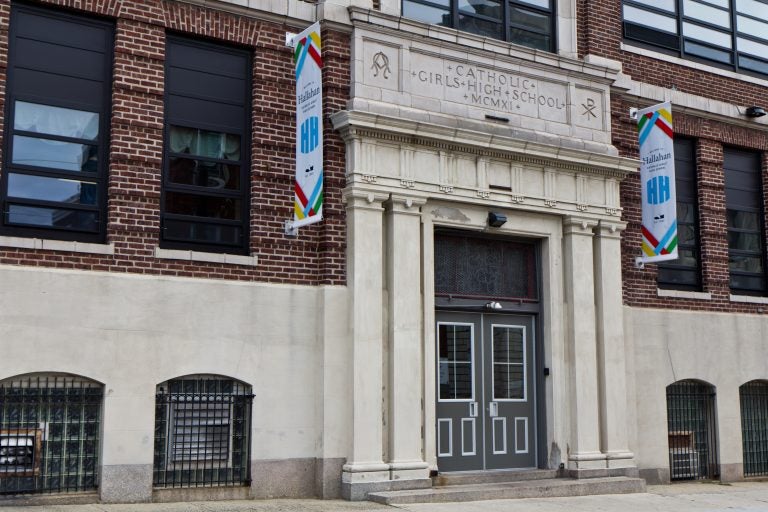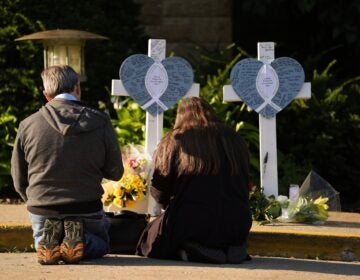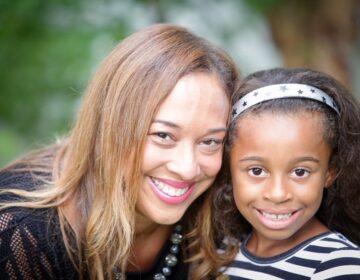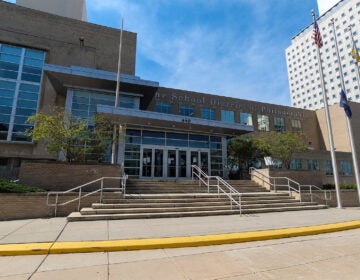With Hallahan closure, Philly loses historic institution and alum lose cherished school
Hallahan holds a special place in Philly’s educational history — and a special place in the hearts of many alum.

John W. Hallahan Catholic Girls’ High School on 19th Street in Philadelphia. (Kimberly Paynter/WHYY)
John W. Hallahan Catholic Girls’ High School has been many things to many generations of Philadelphia women.
For Samantha Ulloa, class of 2008, it was where she learned that, “as a woman you can do whatever you want as long as you put your mind to it.”
Alida Padilla, class of 1993, walked into the Center City school unsure about four years of single-sex education — and walked out with a deep appreciation for the academic focus she’d gained.
“I have to really be about my schooling here,” Padilla quickly learned. “I can’t be about boys.”
Eileen McCafferty DiFranco, class of 1970, relished the school’s racial diversity, which she credits for broadening her worldview beyond the white enclave where she grew up.
“I got to know people as people — and not as stereotypes,” DiFranco recalled.
And Brigit Silva, class of 2008, believes the school’s tight-knit, sisterly environment drew her out of the shy-kid shell she’d developed growing up in a tough part of Northeast Philly.
“It was an escape for me,” Silva said.
But on Wednesday, Hallahan alum learned that their beloved school would not escape the fate that’s met so many urban Catholic schools in recent decades.
The Archdiocese of Philadelphia announced that Hallahan — along with Bishop McDevitt High School in Wyncote — would close at the end of the school year. Officials said the schools were both operating well under 50 percent capacity, and that “state-of-the-art” enrollment projections showed further decline to come.
Hallahan holds a special place in the educational landscape of the city,
It was the first all-girls Catholic high school in the country, with roots tracing back to 1901. When the archdiocese broke ground on the school’s permanent home in 1911, Catholic dignitaries from around the country gathered to celebrate. Pope Pius X shipped an engraved cornerstone from Rome to Philadelphia to mark the occasion.
The school’s formation was spearheaded by Monsignor Philip McDevitt, who later became Bishop of Harrisburg and the namesake of the other high school that was slated to close. In fact, the first reference to Hallahan in the Philadelphia Inquirer came in an article about the 25th anniversary of McDevitt’s ordination. McDevitt received a “large sum” from the church in tribute, which he immediately donated to “the fund for the Catholic Girls’ High School.”
A century later, those names collided again — under far less celebratory circumstances.
For Hallahan alum, the loss transcends city history and simple trivia. It’s personal.
Some still hope it’s a mirage.
An online petition to save the school quickly accrued over 5,000 signatures.
Samantha Ulloa still can’t believe the church would close Hallahan. She’s seen other Catholic schools merge or shutter — but she figured Hallahan would be one of the last ones standing.
“I was just shocked,” Ulloa said. “It’s historic.”
Eileen McCafferty DiFranco saw the writing on the wall. She figures that at some point, only the “really rich” Catholic schools will endure.
Hallahan was never that, she said. And although she didn’t always love the strict, 1960s Catholic school experience, she did value Hallahan’s role as an institution where working-class kids from different backgrounds could coexist.
She fondly recalls a picture she took for the yearbook during her senior year. It showed the hands of the school president, vice president, and the secretary — all girls of different races — clasping one another.
“You looked at those three girls and you could see that’s what the world could be like,” DiFranco said.
“Sisterhood” is the word that springs to mind for many — including Alida Padilla.
Something about the all-female environment engendered a sort of camaraderie she’s never felt anywhere else.
“[With] people I know from college, it’s different,” said Padilla. “Although I might have relationships with them, I didn’t grow up with them in a sisterhood.”
Brigit Silva thinks about that “sisterhood” often, especially when times get tough in her own life.
Her four years at Hallahan were some of the happiest of her life. It was the place she felt most comfortable and supported — a place with an abiding sense of family.
When she received a cancer diagnosis two years ago, she leaned on high school friends. And even when she faced smaller struggles — when bills or schoolwork piled up — she’d comfort herself with thoughts of Hallahan. It’s been a mental refuge for her.
“I couldn’t even explain it,” Silva said. “It was just a place of peace for me.”

Get daily updates from WHYY News!
WHYY is your source for fact-based, in-depth journalism and information. As a nonprofit organization, we rely on financial support from readers like you. Please give today.





